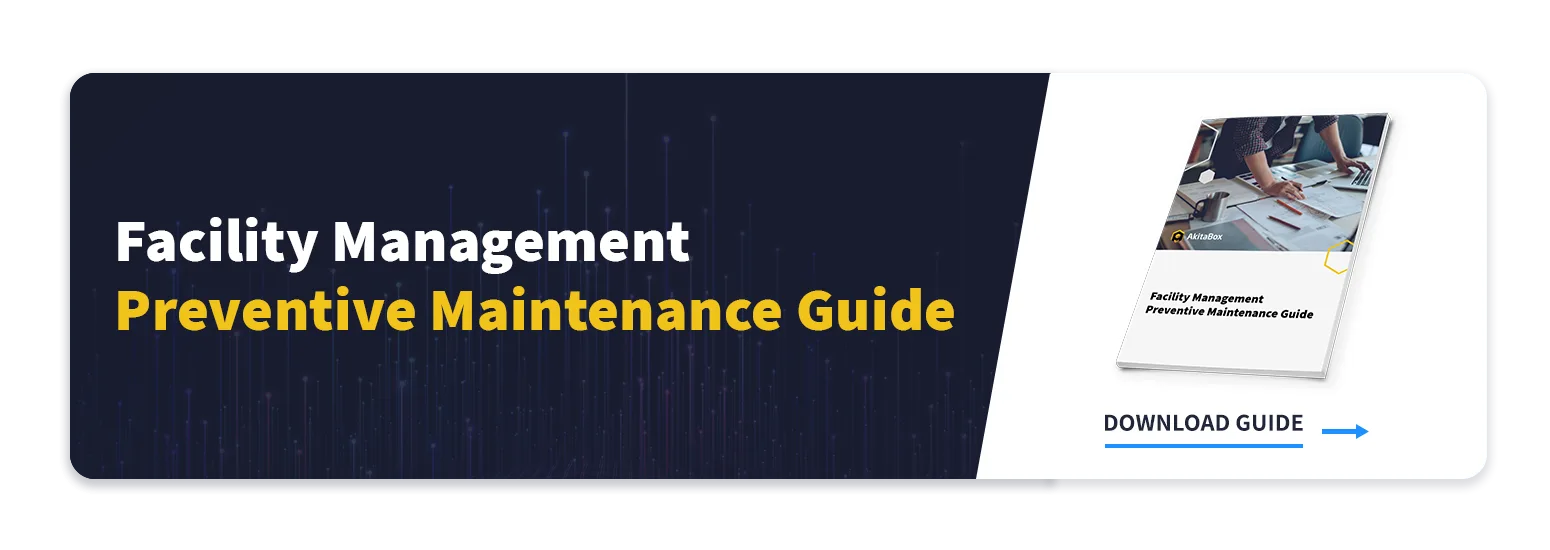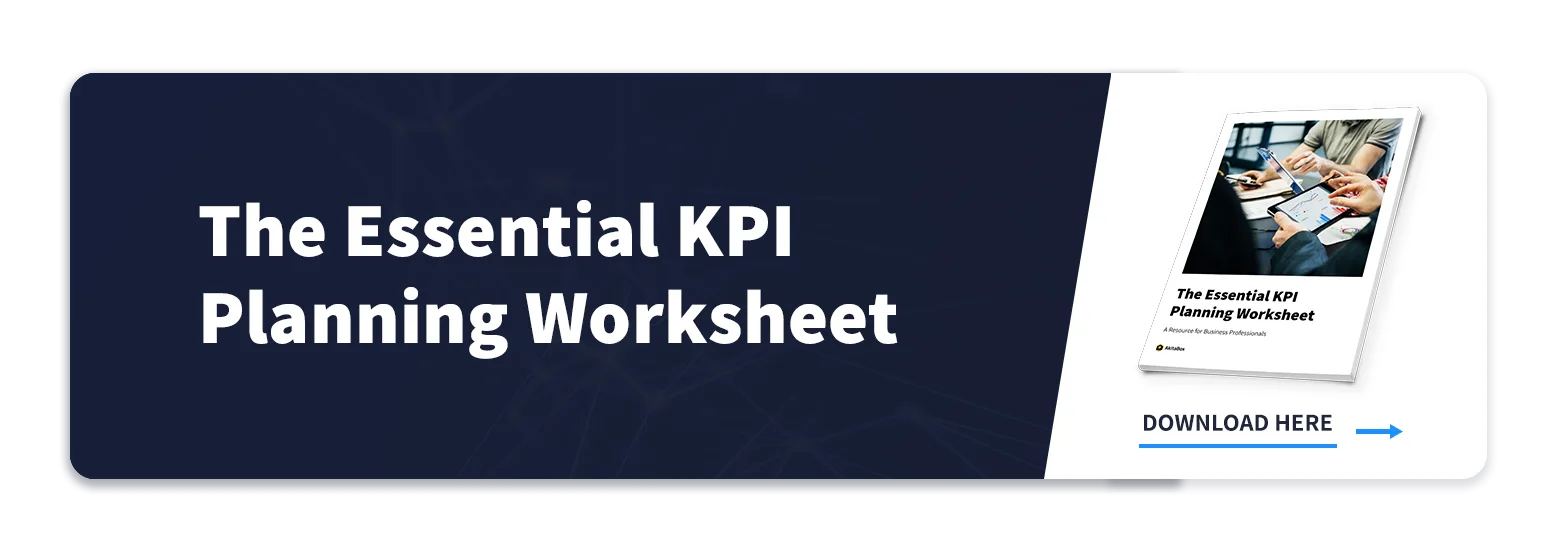Most building managers will agree that maintenance is a big part of making sure that equipment and systems remain safe and functional throughout the year. But with shrinking budgets and overworked facilities teams, it can be tempting to forgo regular maintenance and wait until an asset breaks down before fixing it. No harm done, right?
Wrong. Deferred maintenance can waste thousands of dollars each year due to lack of consistent, proactive repairs. Unplanned asset failure is stressful and time-consuming for a facilities team to fix. If your team still operates on a reactive approach to maintenance, it’s time for a change. Here are the dangers of deferred maintenance and how to transition to a more proactive approach to maintenance.
Table of Contents
Click any of the following links to jump straight to the topic you’re looking for.
- What is deferred maintenance?
- What are the causes of deferred maintenance?
- What are the dangers of deferred maintenance?
- How to decrease deferred maintenance
What is Deferred Maintenance?
Deferred maintenance involves postponing maintenance activities and repairs in order to save costs, meet budget funding levels or realign available budgets. These projects have been marked as a lower priority status than those to be completed in the current budget cycle.
Maintenance teams often work with limited resources (be it budget, time or staff). Limited resources can lead to situations where teams are forced to postpone maintenance work until issues of higher priority are solved first.
What are the risks associated with deferred maintenance?
Backlogged maintenance can be a nightmare for a maintenance team. Not only will your organization be put at risk of costly equipment failure, it may also spend substantially more money on reactive maintenance.
For example, a relatively insignificant repair can quickly worsen when left unaddressed. As a result, total repair costs increase significantly. Deferred maintenance may also have unintended side effects, including health/safety risks and decreased occupant satisfaction when equipment doesn’t work as expected.
5 Most Common Causes of Backlogged Maintenance
Deferred maintenance doesn’t just happen overnight. Let’s take a look at common issues that can lead to heavy maintenance backlogs in your organization.
Cause #1: Your maintenance team is contending with a fixed or declining budget.
Limited budgets may force maintenance teams to optimize workflows in a way that cuts costs. While reallocation of funds may work in the short term, damaged machinery will only continue to worsen without proper care.
| Tip: Are you looking for facilities budgeting resources? Read “The 5 Best Resources for Facility Management Budgeting.” |
Cause #2: Your organization doesn’t have a reliable preventive maintenance program in place.
Preventive maintenance plans are designed to help your team get ahead of maintenance, ensure equipment functionality and save money in the long run. If your maintenance team practices a run-to-failure strategy for most assets, you’re likely setting yourselves up for a long list of unexpected work orders, which can lead to backlogged tasks.
 A building infrastructure software like AkitaBox can help your facilities team stay organized with a preventive maintenance plan
A building infrastructure software like AkitaBox can help your facilities team stay organized with a preventive maintenance planCause #3: Your maintenance team doesn’t have a good way to manage spare parts inventory.
Organization is key when it comes to performing maintenance work. Maintenance teams don’t just need the right tools and parts to get the job done; they also need to know where to find them when they need them. If your team members are unsure of where to find a tool or part, they’re wasting time that could have been spent on completing more tasks.
Cause #4: Your maintenance team is overworked and/or understaffed.
With limited budgets and staffing, it’s no wonder that some maintenance teams find themselves with a long list of deferred maintenance tasks. Limited staffing can make it difficult to catch up and start implementing a proactive approach to maintenance. An overworked team may start to experience burnout, which hampers productivity.
Cause #5: Your team lacks the knowledge or documentation needed to conduct repairs.
Maintenance technicians who don’t know how to fix something will be unable to close out a work order on their own. Similarly, if your maintenance team doesn’t have a reliable document management system, it will be difficult for team members to know the right type of work to conduct. Delays in maintenance can lead to backlogged work.
The Costly Dangers of Deferred Maintenance
Now that we’ve explored the causes of deferred maintenance, we’re ready to look at the effects of postponing critical repairs. There are plenty of real-world examples of the dangers of deferred maintenance. Here’s a list of ten ways that deferred maintenance can affect your organization’s productivity and profitability:
- Safety Hazards
Dysfunctional equipment can cause physical harm or injury to employees and occupants. - Health Risks
Irregular cleaning and inspections can lead to poor air quality, mold, mildew and other health risks. - Compliance Issues
Organizations can incur thousands of dollars in fines for failing safety and compliance inspections. - Costly Emergency Repairs
Unexpected repair costs can cost hundreds, if not thousands, more than preventive maintenance costs. - Reduced Equipment Efficiency
Machinery with dirty filters, worn-out belts or loose parts will not operate at peak performance. - Shorter Asset Life Cycles
Assets that experience rigorous wear-and-tear are unlikely to last their full life cycles. - Entire System Failure
Emergency replacement of critical assets is stressful and can cut into maintenance reserves unexpectedly. - Harm to Productivity
Unexpected equipment downtime can negatively affect profitability and your organization’s bottom line. - Poor Quality Buildings
Deferred maintenance can become a drag on the quality of buildings and ultimately their NOI and overall value. - Employee Burnout and Stress
Pressure to catch up on maintenance while contending with limited resources can strain employee morale.
As this list shows, deferred maintenance can create costly, time-consuming issues that can be difficult to overcome. The good news is that with the right tools and resources, it is possible to bounce back from a history of reactive maintenance and start taking a more proactive approach to workflows.
We’ve got the insight and information you’ll need to be successful. Keep reading to discover the best ways to beat backlogged maintenance in your organization and start saving time and money today.
How to Combat Deferred Maintenance in Your Facility
To break the cycle of deferred projects and backlog buildup, organizational executives and facilities teams have a variety of options that can help them tackle their most pressing issues. We’ve gathered a list of eight ways your organization can get started.
1. Conduct an audit of current maintenance processes and projects
A maintenance audit is designed to help your organization identify solutions to maintenance-related problems. You’ll identify the root causes of why work orders are being backlogged. What steps can be taken to improve processes and eliminate barriers? Include all members of the maintenance team in the interview process. The final result will be a report that features employee feedback and ideas for rapid departmental improvement.
2. Log all maintenance activities in a building infrastructure software platform
Instantly increase productivity by centralizing all data in a cloud-based building infrastructure software. This way, team members have instant access to asset data, work order histories, service requests, equipment locations and documentation (like O&M manuals and receipts). No more running around and sifting through piles of paper; harness the power of software to capture wrench time, improve productivity and boost ROI.
3. Leverage your software to centralize work orders
Say goodbye to bulky binders and messy filing cabinets. Facility management software features are designed to help teams get organized and tackle deferred maintenance tasks more efficiently. Software also increases visibility to upcoming preventive maintenance tasks, enabling your team to use their time more wisely. Your whole team will benefit from having an easy-to-understand work order system and instant, computerized access to asset information.
 Use a building infrastructure software like AkitaBox that has a service request portal and integrated work order management system
Use a building infrastructure software like AkitaBox that has a service request portal and integrated work order management system4. Prioritize your list of backlogged maintenance tasks
Staying on top of emergencies and reactive work while also prioritizing preventive maintenance is no easy feat. Help your team reduce stress, prioritize tasks and balance work by categorizing backlogged tasks into two categories:
- “Immediate Attention” Tasks: Deferred tasks that are cited (or could be cited) for safety violations or require repairs to return to normal operations. Tend to these projects first.
- “Delayed Attention” Tasks: Deferred tasks that could become critical if not addressed within a certain time frame. Prioritize these projects once “immediate attention” tasks have been dealt with.
Your team may also find it helpful to further categorize tasks. For example, sort tasks by cost to upgrade, length of time to repair, asset lifecycle, contractor vs. in-house repair and/or interdependencies (i.e. what processes will be put on hold while repairs take place). Deferred task prioritization is a great way to get stakeholder buy-in and demonstrate how backlogged tasks impact them versus how they impact you.
5. Strengthen your team’s preventive maintenance program
One of the best ways to prevent maintenance emergencies and deferred maintenance is to increase your preventive maintenance efforts. If you’re unsure of how to start, read the Facility Management Preventive Maintenance Guide.
Compile a list of all the asset categories each team is responsible for, and then identify the PM tasks associated with those assets. Once this information is collected, you can begin to schedule future work orders to service the asset in advance.
| Did you know? Some building infrastructure software options offer a preventive maintenance scheduling module to send automated task reminders to your team members. When a PM task needs to be completed, the technician is alerted and they’ll have all the information they need right at their fingertips. |
6. Conduct a life-cycle cost analysis on critical pieces of equipment
From planning through disposal, life-cycle costing is a technique that facilities personnel can use to understand the true cost of an asset over the course of its useful life. A life-cycle cost analysis will help you gain a better understanding of how a poorly-maintained asset could end up costing your organization thousands more than if the asset were regularly maintained and properly serviced. Data from a life-cycle cost analysis will enable you to work with your financial team to forecast an accurate amount of money for maintenance reserves.
7. Work with your financial team to secure additional funding, if needed
In order to manage finances properly, facilities directors must have adequate funding for operations, maintenance and repairs. Getting additional funding is easier if your team is able to provide solid data that shows where your current budget is allocated and how it is affecting your department’s overall success.
A software’s statistics dashboard can do the work for you by compiling critical data and assembling helpful reports. Use this information to convince senior leadership that a budget increase is necessary to saving money and reducing overall deferred maintenance.
8. Educate yourself on the industry’s latest preventive maintenance techniques
Are you looking to build your knowledge of preventive maintenance best practices? If so, check out these industry resources, which feature tips and tricks on switching to a more proactive approach to operations. During the next week or two, carve out time during your day to read these articles:
- Preventive Maintenance 101: How to Implement a Successful Program
- The Facility Manager’s Preventive Maintenance Toolkit
- What is Preventive Maintenance? Here’s the True Definition
- Preventive vs. Reactive Maintenance: What’s the Difference?
A long list of deferred maintenance can be stressful. But with the proper tools and resources, your team will be empowered to tackle your backlog one step at a time. Follow the action items in this article and you’ll be one step closer to improving your organization’s bottom line and getting ahead on maintenance.
Software that Breaks the Cycle of Backlog Build-up
Tight budgets and timelines often drive reactive rather than preventive maintenance management, but you don’t need to face these challenges alone. AkitaBox offers a variety of software solutions that help facility professionals make data-driven decisions that tackle backlog maintenance lists and get ahead of future breakdowns.
AkitaBox empowers maintenance teams to say goodbye to persistent backlogged maintenance. Our teams help establish preventive maintenance schedules which automatically generate work orders, allowing you to stay on top of proactive maintenance tasks and avoid them falling into your deferred maintenance list. Our Capital Management tool provides the insights you need to accurately build capital budgets now and in the future. Make decisions based on actual facility and asset condition and risk data, not industry averages.



